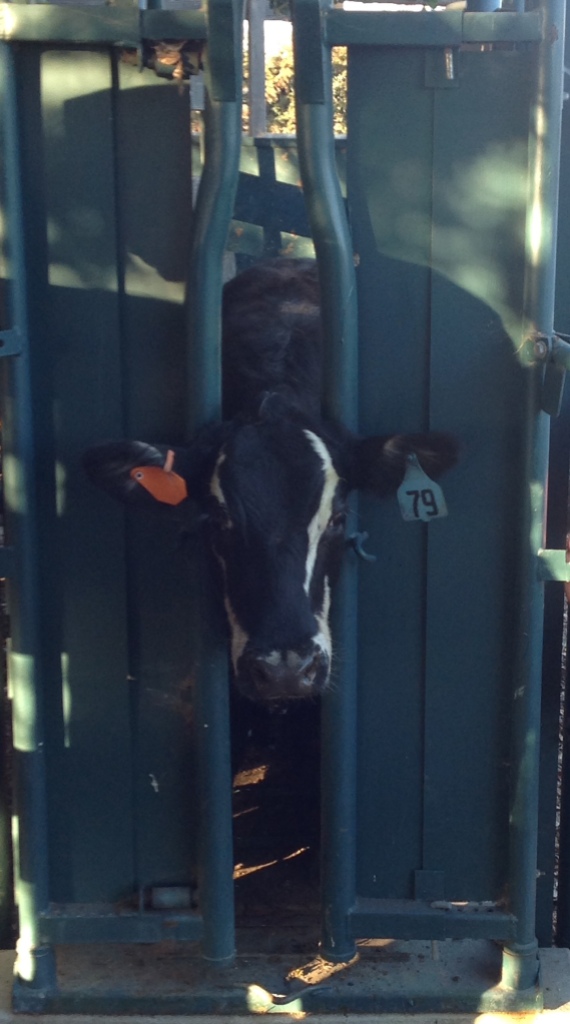Fall is the time of year when we re-evaluate our stock at Grieb Ranch. We ask ourselves questions like:
“Which ones will make great 4-H projects?”
“Which bulls should we keep for future breeding stock?”
“Which bulls need to be castrated, because they did not grow like we had hoped?”
“Which cows need to be replaced by younger heifers?”
Cows (females) make up the majority of our herd and some age-out or have other issues which cause us to cull them out of the herd. They are replaced by younger female cows called, Replacement Heifers.
The first choice of Replacement Heifers comes from the new calf-crop that is making their entrance into the herd daily on the ranch in the Fall. Once chosen to be part of the herd, several activities take place to tag and indentify each one.
All heifers have to be “banged” which means to be vaccinated against Brucellosis or Contagious abortion/Bangs disease before they turn a year old. At the time of vaccination, a tattoo is applied in the ear which identifies the animal as having received the “official vaccine”. The tattoo is in the shape of a “shield” (looks like a flower, kind of) that has a letter on one side and a number on the other side. These identify the RB51 vaccine and the year in which vaccination took place. Vaccination is an important tool in the control, management and elimination of Brucellosis.
Each heifer will also wear an ID tag and some other ear tags.
Here is #79, Ethan’s 4-H heifer for 2015. She is looking at us from inside the squeeze chute which is necessary to use when we work the animals. The blue tag is her ID tag. The large orange tag is to help reduce the flies, lice, ticks that may try to bother her. The flies and lice would reduce weight gain, and ticks carry a fatal disease called, Anaplasmosis. The little orange clip in the right ear is the bangs tag that has to be put in by a vet after the heifer has been officially vaccinated. In addition to the “Bangs” tattoo, most cattle have a ear tag which is a long skinny metal tag of silver or orange color that is clipped to the top edge part of the ear close to the head. If the replacement heifer is missing the “bangs” ear tattoo upon arrival at the fair, then she is sent home.
A Replacement Heifer shown at the fair must be must be within approximately 75 days of calving by the day of sale. To get within that parameter fair the heifers are to be bred sometime after November 16th.
Like most years Daniel has selected a bull who exhibits a “calving ease” trait. This bull will go in with the heifers. Since the heifers are young we want calves that should be born with a frame and weight that makes them easy to calve. The term used for the bull to produce smaller calves is called, “throwing small calves.”
In Daniel’s younger years he would ask, “Won’t it hurt the calves if the bull throws them?” We would explain that the bull wasn’t going to hurt the babies; just be a daddy to smaller-size calves.




